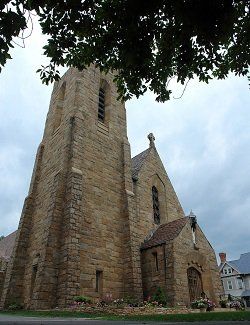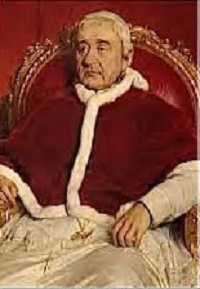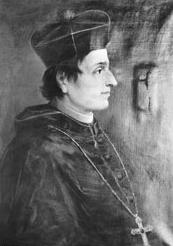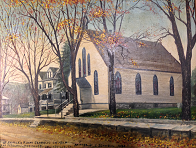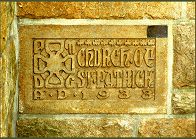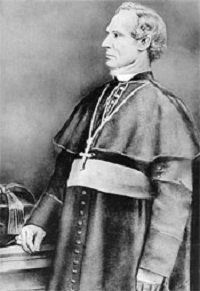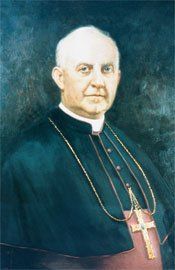In 1841, Father John Brady of Hartford, one of the first three original priests, found himself snowbound in the distant village of Collinsville.
Collinsville is originally a factory town founded by Samuel W. and David C. Collins through their Collins Company which produced the first ready-made axes in the United States. As the Collins Company grew, so did Collinsville, and many generations of the company's employees and families were and still are members of St. Patrick Parish. To learn more about scenic Collinsville.
The following morning, Father Grady celebrated mass for a group of receptive Catholics. This mass was the first ever recorded in Collinsville. Over the next eight years, Father Brady returned frequently to celebrate mass until May 9, 1849 when Father Luke Daly was appointed pastor of St. Mary's Church in New Britain.
In 1849, there were but nine priests to administer to the wants of the Catholics throughout the State of Connecticut! . . . .
One of those men was the Rev. Luke Daly, then pastor os St. Mary's Church, New Britain. His spiritual charge comprised New Britain, Farmington, Berlin, Bristol, Forestville, Collinsville, New Hartford, Simsbury, Tariffville and Rainbow.
Father Daly's vision was that of a Collinsville parish; with the help of nine Irish-Catholic settlers he realized that vision — the names of those settlers appear in the sidebar. For the new church, Mr. Peter Myers gifted land that he had purchased from the Collins Company for $150 — roughly $4,200 in 2013 dollars. He, also, helped transport the lumber and stone for the building's construction at no charge to the church. Mr. Michael Sinott donated $200 — roughly $5,500 in 2013 dollars — to the cause. On August 22, 1852, Hartford's second bishop, the Right Reverend Bernard O'Reilly dedicated the church. Upon St. Patrick's elevation to an official parish in December, 1856, Father Patrick O'Dwyer was its first appointed resident pastor.
St. Patrick Church in Collinsville served all of the surrounding area including New Hartford and Tariffvile and became the center of worship for all Catholics in the area. By 1898, the parish membership was 1,100 — 500 Irish, 400 French, 100 German, and 100 Polish — which represented a 120% increase from its original population. Today, the parish serves primarily the communities of Canton, Avon, Burlington, New Hartford — six ZIP codes in all — and our sister parish of Ste. Thérèse de L'Enfant Jesus in Lilavois, Haiti.
During the largest immigration period in America's history, 1890 – 1910, large numbers of Italian and Polish immigrants joined the existing population of Irish Catholics in Avon which resulted in Avon's becoming a mission of St. Patrick Church in Collinsville during the first decade of the twentieth century. Then pastor Father William P. Kennedy made arrangements to have masses celebrated in Schoolhouse Number 5 — later called Towpath School. Father Kennedy, soon thereafter, started raising money to acquire land to build a chapel. In 1919, a 150-person chapel was dedicated and, in 1922, the mission transferred to the separate parish of St. Patrick's Church in Farmington.
On January 30, 1912, the mansion owned by Sam Collins, founder of the Collins Company, was razed by fire. The grounds overlooking the Farmington river from their Collins Road location, became the home of the parish-operated Calvary Cemetery. One of three cemeteries operated by the parish corporation.
On March 21, 1925, a fire did severe damage to the church and destroyed most of the parish records. Afterwards, the storage of records was at St. Mary's of New Britain as it had been up until 1861. No one ever learned the cause of the fire.

